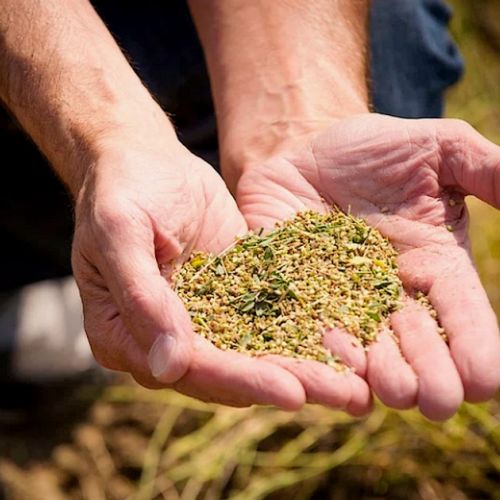Gardening: What Is An Epiphytic Plant?
Very popular with beginning gardeners, orchids are probably the best known example of epiphytic plants. But do you know what this expression means exactly? We suggest you discover the definition and the singular characteristics of an epiphytic plant.
What is the definition of this word?
The adjective 'epiphyte' comes from the Greek and literally means 'on the surface of plants'.
Indeed, an epiphytic plant is unique in that it grows on other plants (most often trees), not in the ground.
Attention: epiphytic plants should not be confused with climbing plants or parasitic plants.
Some epiphytic plants like philodendron are also climbers because they use their support to grow high. But others, like ferns or Tillandsia do not climb.
It should also be noted that epiphytes are not parasites. They only use the host plant as a support.
They do not feed at its expense, unlike arboreal parasites that live on trees and draw their food from the sap of their host.
How do they survive?
If you thought that a plant necessarily grows in the ground, think again! Some plants, such as mosses and orchids, do not need to be rooted in the ground to grow.
An epiphytic plant only needs to anchor itself to the bark of a tree to find some organic matter and to collect water from rain or dew.
Epiphytic plants find everything they need to live without any contact with the soil.
To compensate for the lack of soil, these species have adapted. They usually have organs that absorb ambient moisture (such as small absorbent hairs) or act as reservoirs to allow them to store water.
For example, orchids have aerial roots covered with a highly absorbent membrane, while tillandsias have small hairs on their foliage.
Are these plants an exception?
Contrary to what one might think, epiphytic plants are not exceptions in the plant kingdom.
On the contrary, they are not rare since there are more than 30,000 species in the world!
Most of the time, this type of plant is originating from tropical rainforests, an environment where the vegetation is dense and the competition with other plants very tough.
In tropical forests, only 3% of light reaches the ground. This explains why some plants cling to a support to gain height and enjoy better living conditions.
Because of its ability to live above ground, an epiphytic plant takes advantage of more light and rainwater but also insect pollinators or wind to spread its seeds.
What are some examples of epiphytic plants?
Among the best-known epiphytic plants, we must of course mention orchids: although they are usually sold in pots, most of them do not need soil.
In fact, the vast orchid family includes 70% epiphytic plants. In their natural environment, these flowers of tropical origin grow on trees.
This is also the case with anthurium, another epiphytic plant of tropical origin in the Araceae family.
There are also many examples of epiphytic plants in the family Bromeliads. It is to this family that the Tillandsia also nicknamed 'daughter of the air' belongs! It can grow in the air, simply hanging from a support like a piece of wood or a stone.
In the forest, most ferns and mosses are also epiphytes. They are able to cover trunks and other supports and survive without soil, provided they find enough moisture in their environment. The davallia fern or rabbit's foot is a good example.
Even more surprisingly, some cacti belong in this category of plants! This is especially true of the Easter cactus and the Christmas cactus or Schlumbergera.
How to grow them?
As you can see, epiphytic plants do not need soil but simply water and a support.
This support can be living (a tree, a branch) or not (a stone, an old stump, an object...).
Thanks to their ability to live above ground, which is like a superpower, epiphytes are very interesting to create vegetated walls or plant pictures.
For orchids on the other hand, epiphytic cultivation requires high hygrometry that is difficult to reproduce in an apartment.
This is why, in our interiors, they are grown in a pot on a very draining substrate that retains moisture around the plant while providing support.
If you want to grow an epiphytic plant in a pot, you have a choice of different types of substrate: cork, pine bark, clay beads or special substrates for orchids available at garden centers.







